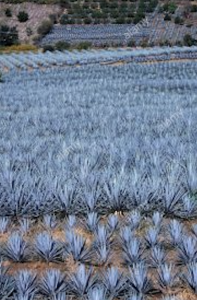Learning about wine
Tequila and Mezcal which are the differences

Tequila and Mezcal are both made with Agave, but they have notable differences.
Come and discover them with me
Tequila
Tequila is a distillate of Agave Azul, in the past year the Tequila could only be produced with 100% Agave Azul, today it can contain up to 51% of agave and the remaining 49% can be corn syrup and sugar cane, what is also called tequila mixto.
Production is limited to the state of Jalisco, in the Ticuja area, at the foot of the Tequila volcano where the agaves are more fragrant with an higher sugar level and superior organoleptic properties. Production is now extended to 5 regions (Jalisco, Guanajuato, Michoacan, Najarit and Tamaulipas).
The processing involves the harvest of ripe agaves, whose pine cones are cooked in hermetically sealed ovens made of clay or stone or steel. The cooking lasts about 24 hours making the mass soft and sweet; after having kneaded and ground it, the mass is left to ferment with selected yeasts and water. The outcome of this fermentation is called the Pulque and after 5/6 days it becomes distilled.
Classification
- BLANCA ( ages for 2 months)
- REPOSADO ( aging goes fro 2 to 12 months)
- ANEJO ( ages for 1 year in big oak barrels of max 200 liters).
Mezcal
The production comes from different areas than Tequila, There are 9 Mexican regions that produce mezcal: Oaxana, Durango, Guanajuato, Guerrero, San luis Potosi, Tamaulipas, Zacatecas, Michoacan, and Puebla.
The processing is done directly on the harvesting ground where the pine cones are cooked over a fire fed by leaves and branches of resinous woods. The cooking is protected by river stones and residues of previous processing, and it lasts several days. The mass obtained (Palenqueros) is fermented from 36 to 72 hours in steel vats and undergoes two distillations: one at 20 ° – 25 ° of alcohol and the second up to 60 ° from which the Mezcal is obtained.
Classification
- JOVE (colorless and no aging)
- REPOSADO (ages for 2 to 11 months on oak barrels)
- ANEJO (ages for 1 year in big oak barrels of max 200 liters)
- DE PECHUGA (ferments with fruit)
Nice to know
The Gusanito (the Gusano), the worm that you find at the bottom of some Mezcal bottles is none other than the larva of a nocturnal butterfly that lives in the agave plants. Tradition tells us that , having emptied the bottle on an evening with friends, the diner who finds the larva in the glass must absolutely eat it in order to avoid 7 years of bad luck.
And now let’s taste! Check out the Tequila and the Mezcal I selected for you
ciao
Elisa





